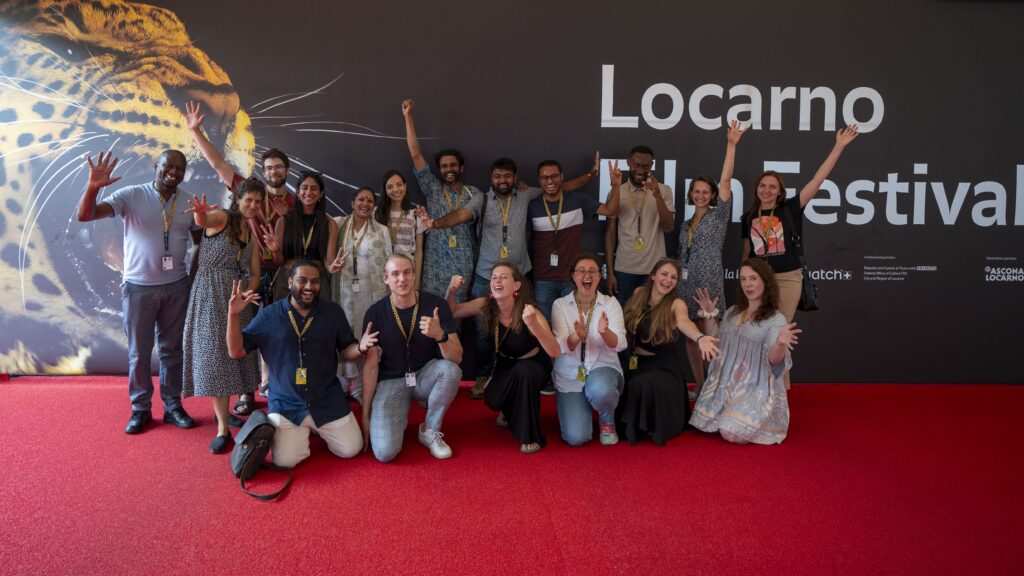Leopards, Movies and Science
September 12, 2023Although we are specialized in different fields, all researchers at ETH deal with the same challenge: How can we provide our research in a captivating and understandable way to the public? After all, our research can only reach its full potential when thoroughly understood by its audience. Together with young researchers from multiple other Swiss universities, we ventured out to Locarno to attend the workshop “Storytelling & Storyboarding Science” at the 76th Locarno Film Festival to learn storytelling from the experts.

We are young scientists at ETH that teamed up with other young scientists from the universities of Basel, Lausanne, Neuchatel and EAWAG as part of the course “Storytelling & Storyboarding Science at the Locarno Film Festival”. Although we are experts in different fields, we have one thing in common: we are all striving to communicate our scientific findings in the best way possible to the public. After all, our science can only transcend and contribute to future projects if fully understood by its audience. To do so, we wanted to further dive into the science behind storytelling, and who better to ask than the award-winning experts specialized in storytelling at one of the oldest film festivals in the world?

The course “Storytelling and Storyboarding Science at the Locarno Film Festival” is organized by the Life Science Zurich graduate program, a joined program between ETH and the University of Zurich. The course promises young scientists like us the knowledge behind storytelling and how to incorporate this in our presentations and scientific papers all through the magical combination of watching movies, interviewing film directors, and theoretical classes taught to us by Samer Angelone. Samer made the inspirational switch from obtaining a Ph.D. in population genetics to filmmaking. While struggling to translate his science to papers and presentations he became fascinated by the science behind storytelling and became a trainer to help other young scientists overcome storytelling obstacles in their career.
Our first introduction to the Locarno Film Festival was a mesmerizing one. After having left the grey and humid weather of Zurich, we entered the magical and sunny atmosphere of the Locarno Film Festival. A world rich in leopards, leopard prints, and most importantly: movie screens all throughout the city. Our first screening was the world premiere of “El Auge Del Humano 3” directed by Eduardo Williams. Eduardo is an Argentine director who received the award of the “Golden Leopard – Filmmakers of the Present” at the Locarno Film Festival in 2016. Safe to say, having heard about Eduardo’s previous success, we were very excited to ask him: As an expert in storytelling, what would your advice be for us to best translate our science to our public?



Eduardo gave us the surprising advice to focus on making our research as accessible as possible to the public regardless of fear of negative feedback. In other words, write your story unapologetically, and let the public decide for themselves whether they like it or not. To continue on this topic we asked him: What are the pitfalls in storytelling and how can we avoid this? Eduardo answered that our insecurities are often our biggest downfall. Because we fear our friends or families’ reaction, or the reaction of the audience, we might not pursue our ideas or dreams. He advises to not fear feedback and to pitch your idea, regardless of fear of the reaction. This translates well to our research and our task as a researcher. Our fear of negative feedback when thinking outside of the box can often limit our creative process and thus limit our continuous excursion to explore the boundaries of science.


On the following day, we watched “Whispers of fire and water”, and interviewed its director: Lubdhak Chatterjee. In the movie we see a young audio artist, Shiva, visiting the largest coal mines in eastern India. The coal mines swallow up the surrounding nature and living space of the tribal villages. Overwhelmed by the life around the coal mines he moves to one of the tribal villages to recover. However, instead of recovering, he slowly becomes lost and deteriorates, just like the nature around him.
Lubdhak and his team all have an engineering background and can relate to us more than we thought. After having obtained their degree, they became passionate about photography and storytelling. Their advice for us is to find your passion, your passion for your research will help you to convey a genuine message to your audience. However, the producer Soumen Mondal warns us that not all science has led to construction, it also led to destruction just as what the team tried to tell us with their movie. As such, with great science, comes great responsibility.


The magic of watching movies and discussing storytelling with the filmmakers was not complete without its secret sauce: the valuable theoretical classes from Samer. The most important thing we learned was to create an emotional experience for our audience and create a space so they can connect with your story. To do so, there are multiple techniques such as creating contrast in your story, for example by using the structure: “and, but, therefore”. And last but not least: your audience is more interested in the grass than the seeds. Curious to learn what it means? Sign up for the course next year and find out!
To conclude all the lessons we learned, from all of us to all our fellow young researchers: Be passionate, do not let insecurity be your obstacle, and do not be afraid to make an emotional rollercoaster of your story, but remember: With great science, comes great responsibility.


